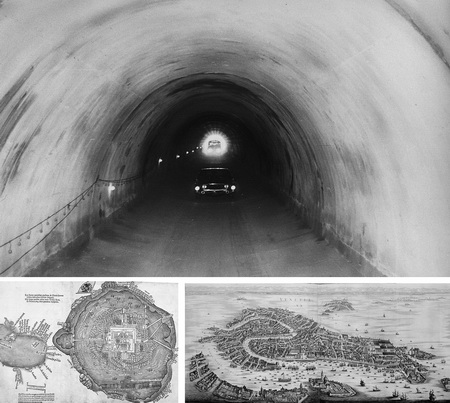 |
Possessing Nature |
| The Mexican Pavilion at the 56th International Art Exhibition of la Biennale di Venezia with Possessing Nature, by Tania Candiani and Luis Felipe Ortega, will be open until November 22, 2015, at the Sale d’Armi of Venice’s Arsenale. |
| Related images (1) |
|
In light of the colonial mandate to alter and contain Mexico’s lakes, the city’s vision has been remarkably different from that of Venice. For the past four centuries, Mexico’s lake systems have gradually vanished. The construction of channels, the development of a complex drainage system, and the transformation of the city’s natural tributaries, in conjunction with rampant urban development and the increased demand for services, have resulted in the profound transformation of the city’s natural environment. Tania Candiani and Luis Felipe Ortega use different means: while Candiani works mainly with the voice, narrative linguistics, and the power of sound, Ortega explores, through moving images, the nature of time, while focusing on the relation between matter and space. Luis Felipe Ortega and Tania Candiani collaborate for the first time on this piece, which brings together some of their shared concerns, as it questions the links and contradictions between vision and sound; tension and balance; nature and technology. The artists describe Possessing Nature as a “counter-infrastructure” sustained by steel plates, plumbing, and hydraulic pumps. Originally built in Mexico, it was later reassembled in Venice, the result of a precise feat of engineering. Possessing Nature transforms itself into a hydraulic system that draws water directly from the Venice lagoon, moving it through a canal inside the monumental sculpture and propelling it at different speeds and with different results, to end in a reflecting pool that returns the water back to the original site of its extraction. This trajectory mirrors the way Mexico City’s complex hydraulic systems operate. The sound produced by the movement of the water, as it runs through the piece, resonates throughout the pavilion. As water flows into the reflecting pool, a video is directly projected onto it, the end result of the rigorous research conducted by the artists. The images juxtapose the past and present of both Mexico and Venice. In Possessing Nature, the artists craft a metaphor that alludes to our dominance over nature. Canals enable navigation, flux, and interchange; through them flows the very essence of nature and the consequences of human intervention. This is the dilemma that confronts humans and nature, and hence the piece’s title. The theme chosen for the 56th International Art Exhibition of la Biennale di Venezia is no exception. This year’s exhibition, curated by Okwui Enwezor under the title All the World´s Futures, suggests, through a provocation, the ruinous and catastrophic consequences of modernity. As Enwezor articulates, the narratives of progress are directly correlated with mass destruction. Therefore, the general framework of the Art Biennale 2015 serves also as an invitation to reflect upon these circumstances. In this sense, the Mexican Pavilion summons visitors to observe and ponder upon the questions that contemporary art poses on the global stage, as it shares its vision with other nations. During the last decade, Mexico has played a key role vis-à-vis contemporary art discourse worldwide. The presence of its artists in fairs, private and public collections across the globe, Biennials (Berlin, Sao Paulo and Documenta), as well as in individual and collective exhibitions in museums as prominent as the Tate Modern in London, or the Museum of Modern Art in New York, delineate a tendency which INBA considers crucial to keep supporting. The presence of the Mexican Pavilion at this year’s Art Biennale affords another example of the richness of this international conversation. As one of the primary roles of our cultural policy, CONACULTA and INBA support Mexico’s presence at the Art Biennale 2015. This event has been, since its foundation, one of the most prestigious cultural platforms for contemporary art; therefore fulfilling the commitment to foster the development of artistic expression in our country. INFORMATIONS: Open to the public: May 9 – Novembre 22nd, 2015 Place: Venice, Arsenale, Sale d'Armi, Tesa B For more information on how to visit the 56th International Art Exhibition – la Biennale di Venezia: Pavilion of Mexico site: www.mexicobienal.org | |

 Munch: The Scream Within
Munch: The Scream WithinOne of the year’s most eagerly awaited exhibitions to open its doors on 14 September 2024: Edvard Munch is back in Milan with a major retrospective after a 40-year absence.
 In the garden
In the gardenThe initiative, which is scheduled to run from June 26th to September 13th, 2020, is inaugurating a temporary space for art in Corso Matteotti 5, in Milan, in the very heart of the city.
 Perugia Travel Guide
Perugia Travel GuidePerugia is the chief town of Umbria. This beautiful town is sited on a hill in the middle of a verdant country. His central square is considered one of the most beautiful squares of Italy and history, traditions, art and nature make a unique ensemble in this town as in the whole



 Possessing Nature explores the linked environmental histories of Mexico City and Venice, cities whose identities were profoundly shaped by the waterscapes that existed at the moment of their foundation. Candiani and Ortega’s piece is an aesthetic articulation and in depth-exploration of both of these lacustrine environments, of their natural resource management, and what bearing these have had on their distinct communities. Hence, the protagonist of this piece is water, as the key element that serves to evoke memory.
Possessing Nature explores the linked environmental histories of Mexico City and Venice, cities whose identities were profoundly shaped by the waterscapes that existed at the moment of their foundation. Candiani and Ortega’s piece is an aesthetic articulation and in depth-exploration of both of these lacustrine environments, of their natural resource management, and what bearing these have had on their distinct communities. Hence, the protagonist of this piece is water, as the key element that serves to evoke memory.